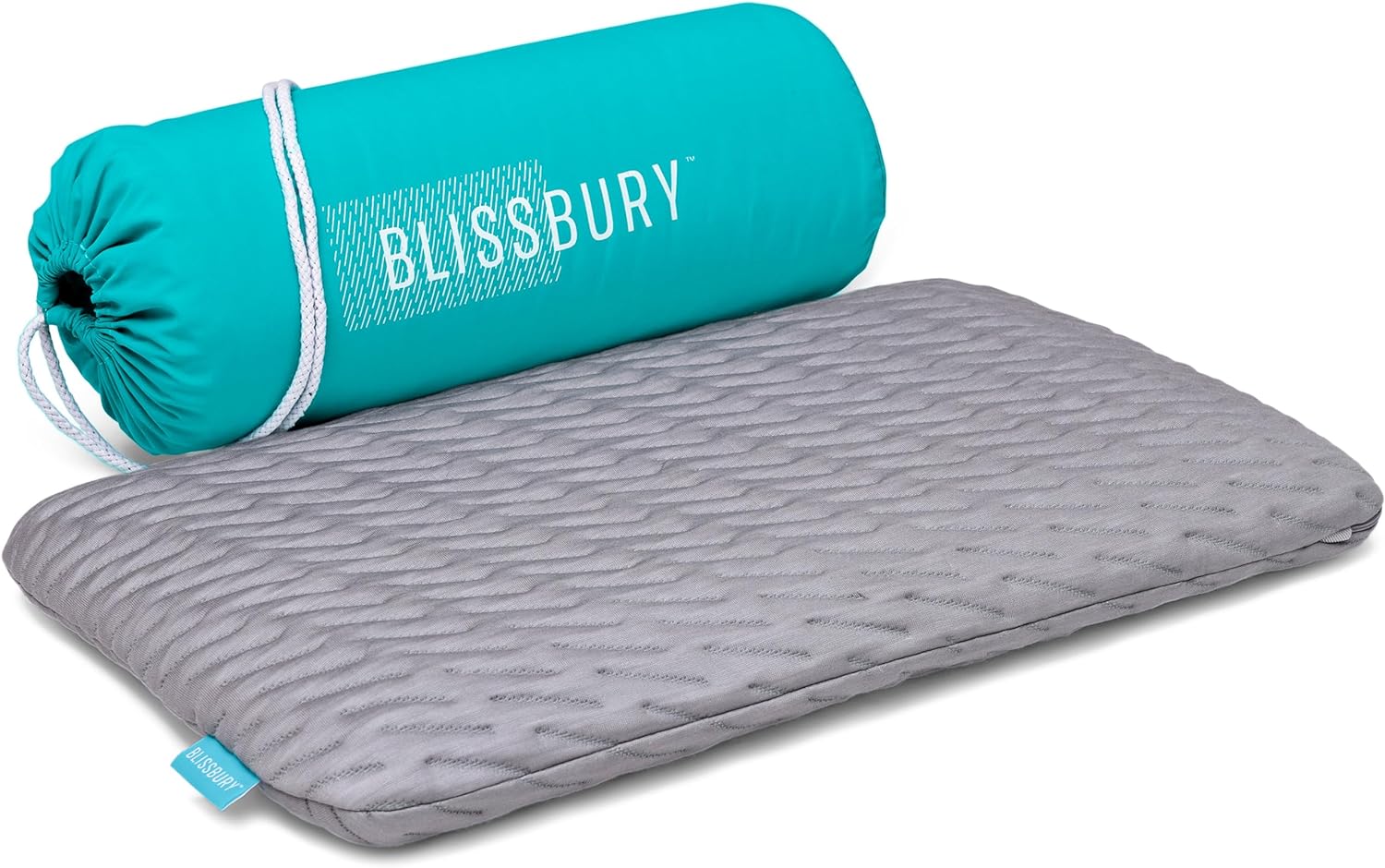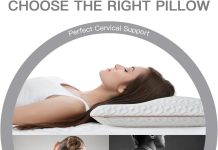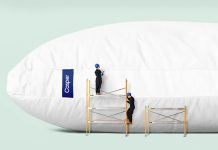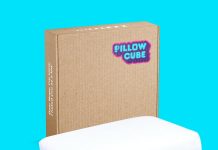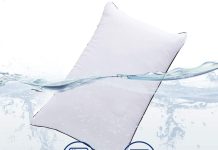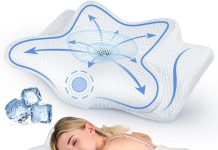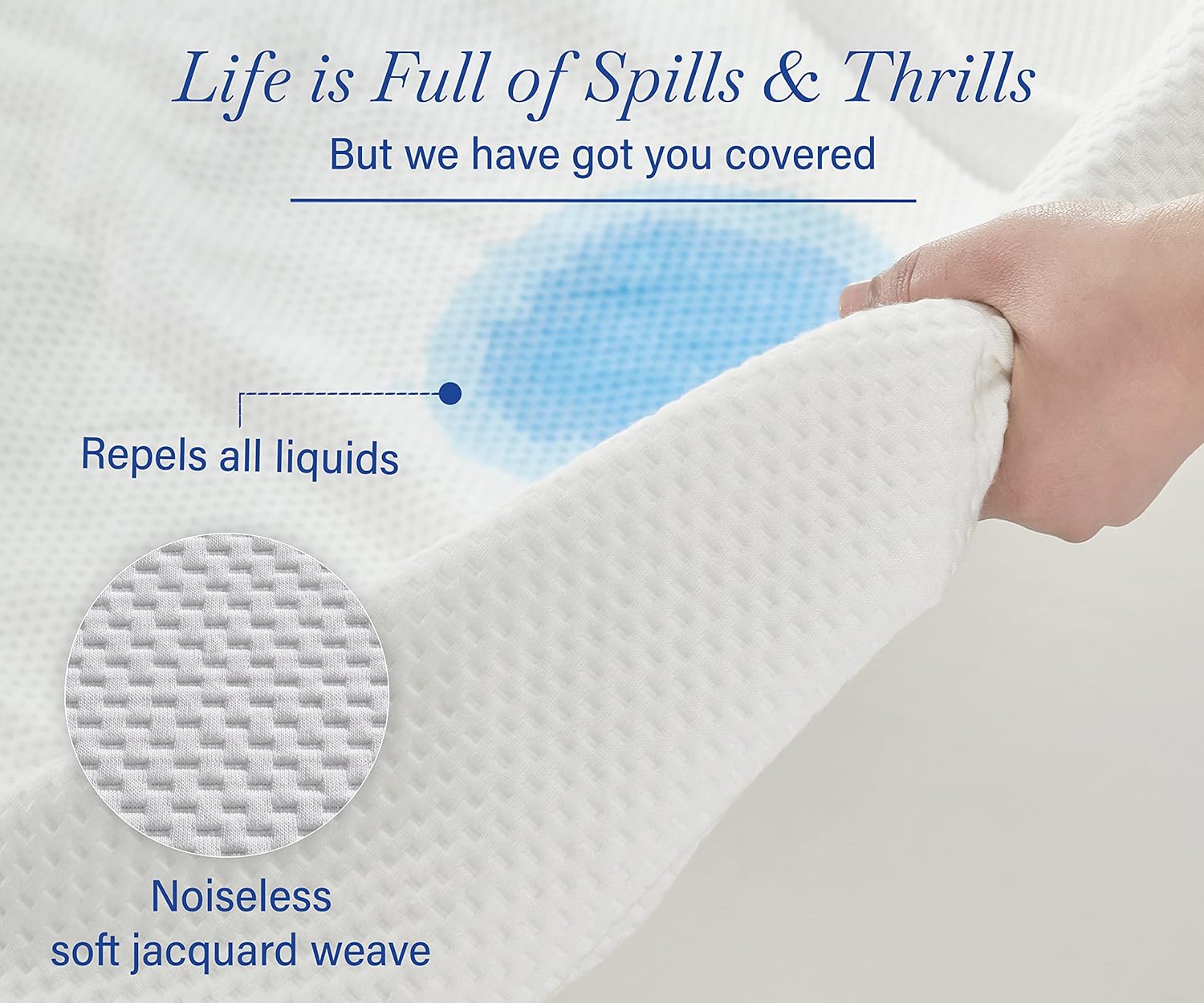Are you constantly waking up with allergy symptoms, such as sneezing or congestion? You may have considered investing in bed pillow protectors or encasings to help alleviate these symptoms. But do they actually work? In this article, we will explore the effectiveness of bed pillow protectors and encasings in stopping allergens from affecting your sleep and overall health. So if you’ve been wondering whether these products are worth the investment, keep reading to find out the answer!
Review contents
What are bed pillow protectors and encasings?
Bed pillow protectors and encasings are essential bedding accessories that play a crucial role in providing a clean and healthy sleep environment. They are specially designed covers that encase your pillow, acting as a protective barrier against common allergens such as dust mites, mold, pollen, and pet dander.
Definition
Bed pillow protectors are lightweight and usually made of a tightly woven fabric that prevents allergens from penetrating through to your pillow. On the other hand, encasings are a more comprehensive option as they fully enclose your pillow, providing an airtight seal with a zipper closure. The primary purpose of both protectors and encasings is to create a barrier between you and the allergens that may reside in your pillow.
Materials
Bed pillow protectors and encasings can be crafted from various materials, each offering different qualities and benefits. Common materials include cotton, polyester, microfiber, and hypoallergenic fabrics. It is essential to choose a material that is not only comfortable but also effective in preventing allergens from entering your pillow.
Types
There are different types of bed pillow protectors and encasings available in the market to suit various needs and preferences. Some options include waterproof protectors for added spill and moisture protection, anti-allergen protectors for maximum allergy relief, and cooling protectors for those who tend to sleep hot.
Importance
Using bed pillow protectors and encasings is crucial, especially for individuals who suffer from allergies or asthma. These protective covers create a physical barrier between you and potential allergens, reducing your exposure and minimizing the risk of allergy symptoms. Additionally, they can help in prolonging the lifespan of your pillow by protecting it from stains, spills, and dust accumulation.
Common allergens found in pillows
Pillows can serve as a breeding ground for various allergens that can trigger allergy symptoms and disrupt your sleep. Understanding the common allergens found in pillows allows you to take the necessary precautions to protect yourself and create a healthier sleep environment.
Dust mites
Dust mites are tiny, microscopic organisms that thrive in warm and humid environments, such as pillows and mattresses. They feed on dead skin cells and their feces contain allergenic proteins that can trigger allergies and asthma symptoms.
Mold
Mold is a type of fungus that thrives in damp and poorly ventilated environments. If your pillow is exposed to moisture or high humidity, mold can grow, leading to mold spores being released into the air and potentially causing respiratory problems.
Pollen
Pollen is a common allergen that can find its way into your pillow through open windows or on your clothes and hair. If you have seasonal allergies, pollen trapped in your pillow can worsen your symptoms and disrupt your sleep.
Pet dander
If you have pets that spend time on your bed or near your pillow, their dander (dead skin cells) can accumulate in the fibers of your pillow. Pet dander is a common allergen that can cause allergic reactions, especially in individuals with pet allergies.
How do bed pillow protectors and encasings work?
Bed pillow protectors and encasings work through several mechanisms to effectively prevent allergens from entering your pillow and creating a healthier sleep environment.
Barrier function
The primary function of bed pillow protectors and encasings is to create a physical barrier between your pillow and potential allergens. By preventing allergens such as dust mites, mold spores, pollen, and pet dander from entering your pillow, these covers significantly reduce your exposure to these allergens, helping to alleviate allergy symptoms.
Zipper closure
Bed pillow encasings are equipped with zipper closures to provide an airtight seal. The zipper ensures that no allergens can enter or exit the encasing, maintaining the integrity of the protective barrier throughout the night.
Allergen-proof fabric
Bed pillow protectors and encasings are made from tightly woven fabrics that have a high thread count. This dense weave prevents allergens from passing through the fabric, making it difficult for them to reach your pillow and trigger allergy symptoms.
Breathability
While bed pillow protectors and encasings provide an effective barrier against allergens, it is crucial to choose a cover that allows for proper airflow and breathability. This ensures that the cover does not trap moisture or heat, creating a comfortable sleeping environment.
Do bed pillow protectors and encasings effectively stop allergens?
Numerous studies, customer reviews, and testimonials demonstrate the effectiveness of bed pillow protectors and encasings in stopping allergens and providing relief for individuals with allergies or asthma.
Studies and research
Various scientific studies have shown that bed pillow protectors and encasings significantly reduce allergen exposure and alleviate allergy symptoms. These studies have measured the allergen levels inside protected pillows compared to unprotected ones, consistently finding lower levels of dust mites, mold, pollen, and pet dander in pillows with protective covers.
Customer reviews and testimonials
Customers who have used bed pillow protectors and encasings often report a significant improvement in their allergy symptoms and overall sleep quality. Many individuals note reduced nasal congestion, sneezing, itching, and wheezing, attributing these positive changes to the use of protective covers.
Effectiveness against different allergens
Bed pillow protectors and encasings are highly effective against common allergens such as dust mites, mold, pollen, and pet dander. However, it is important to note that while these covers significantly reduce allergen exposure, they do not eliminate it entirely. Continuous monitoring and management of other potential allergen sources in your sleep environment are also necessary for optimal allergy control.
Duration of protection
The effectiveness of bed pillow protectors and encasings can vary depending on factors such as the quality of the product, regular cleaning, and overall maintenance. Generally, with proper care and usage, these protective covers can provide long-lasting protection against allergens, ensuring a healthier sleep environment for an extended period.
Factors influencing the effectiveness of bed pillow protectors and encasings
Several factors can influence the effectiveness of bed pillow protectors and encasings in protecting against allergens and providing optimal allergy relief.
Quality of the product
Choosing high-quality bed pillow protectors and encasings is essential for effective allergen protection. Look for covers that are made from tightly woven fabrics with a high thread count and are specifically designed to provide allergen-blocking capabilities.
Fit and installation
Proper installation and a snug fit are crucial for the effectiveness of bed pillow protectors and encasings. Ensure that the cover fits your pillow securely, with no gaps or loose areas that could allow allergens to enter or escape.
Regular cleaning
Regularly cleaning bed pillow protectors and encasings is essential to maintain their effectiveness. Follow the manufacturer’s instructions for cleaning, washing, and drying to ensure that the covers remain free from allergens, dust, and debris.
Additional measures
While bed pillow protectors and encasings are effective in reducing allergen exposure, implementing other allergen control measures can further enhance their effectiveness. This includes regular vacuuming and dusting of your bedroom, washing bedding frequently, and minimizing exposure to potential allergen sources such as pets or pollen.
Benefits of using bed pillow protectors and encasings
The use of bed pillow protectors and encasings offers various benefits beyond allergen protection, making them an essential investment for a healthier sleep environment.
Reduced allergy symptoms
By preventing allergens from entering your pillow, bed pillow protectors and encasings significantly reduce exposure to common allergens, leading to a reduction in allergy symptoms such as sneezing, itching, and nasal congestion.
Improved sleep quality
With fewer allergens present in your pillow, you can enjoy a better night’s sleep. Reduced allergy symptoms and improved breathing can lead to a more restful and refreshing sleep experience, allowing you to wake up feeling more energized and rejuvenated.
Prolonged pillow lifespan
Bed pillow protectors and encasings act as a barrier against stains, spills, and dust accumulation, helping to extend the lifespan of your pillow. By shielding your pillow from potential damage, these protective covers can save you money in the long run by reducing the frequency of pillow replacement.
Prevention of dust mite infestation
Dust mites are a common trigger for allergies and asthma. By using bed pillow protectors and encasings, you create an inhospitable environment for dust mites, preventing their infestation and reducing the risk of allergic reactions.
How to choose the right bed pillow protector or encasing
Choosing the right bed pillow protector or encasing is crucial to ensure optimal allergen protection and compatibility with your sleep preferences.
Size and dimensions
Select a protector or encasing that matches the size and dimensions of your pillow. An ill-fitting cover may not provide sufficient coverage or could lead to discomfort during sleep.
Materials and fabric quality
Consider the materials and fabric quality when choosing a bed pillow protector or encasing. Look for covers that are made from hypoallergenic and tightly woven fabrics to effectively block allergens while providing comfort.
Closure type
The closure type of the cover is an important consideration to ensure an airtight seal. Opt for encasings with high-quality zipper closures that function smoothly and securely.
Certifications and labeling
Check for certifications and labeling that indicate the product’s effectiveness against allergens. Look for covers that are labeled as allergen-proof or have been tested and certified by reputable organizations for their ability to prevent allergen penetration.
Tips for maintenance and care
Proper maintenance and care of bed pillow protectors and encasings are essential for their longevity and continued effectiveness in preventing allergens.
Regular washing and drying
Follow the manufacturer’s instructions for regular washing and drying of your bed pillow protectors and encasings. It is recommended to wash them at least once a month or as deemed necessary to keep them free from allergens and dust.
Replacing when damaged
Regularly inspect your bed pillow protectors and encasings for signs of damage or wear. If you notice any tears, holes, or deterioration, replace them immediately to ensure continued allergen protection.
Using with additional bedding
For enhanced allergen protection, consider using bed pillow protectors and encasings in conjunction with hypoallergenic pillowcases and mattress protectors. This layered approach can provide comprehensive protection against allergens, ensuring a healthier sleep environment.
Avoiding allergen exposure during cleaning
When cleaning your bedding, including the bed pillow protectors and encasings, take precautions to minimize allergen exposure. Wear gloves and a mask if necessary, and perform the cleaning in a well-ventilated area to reduce the risk of triggering allergy symptoms.
Alternatives to bed pillow protectors and encasings
While bed pillow protectors and encasings are highly effective, there are alternative approaches to consider for allergen control in your sleep environment.
Allergen-proof pillows
Some pillows are specifically designed to be allergen-proof, incorporating advanced materials and construction techniques to prevent allergens from entering the pillow. These pillows can provide a comprehensive solution for individuals with severe allergies or who prefer not to use protective covers.
Hypoallergenic pillow fillings
Choosing pillows with hypoallergenic fillings, such as memory foam, latex, or buckwheat hulls, can help reduce allergen exposure. These fillings are less prone to dust mite infestation and often resist the growth of mold and mildew.
Air purifiers and humidifiers
Using an air purifier with a high-efficiency particulate air (HEPA) filter can help remove allergens from the air, improving the overall air quality in your bedroom. Additionally, maintaining optimal humidity levels with a humidifier or dehumidifier can create an inhospitable environment for certain allergens.
Frequent pillow replacement
Regularly replacing your pillow is another approach to mitigate allergen exposure. While this may not be as cost-effective as using bed pillow protectors and encasings, it can be an option for individuals who prefer to avoid protective covers but still want to reduce allergen exposure.
Conclusion
Bed pillow protectors and encasings are essential tools in the fight against allergens and the promotion of a healthy sleep environment. These covers create a protective barrier between you and common allergens, reducing your exposure and diminishing allergy symptoms. With proper maintenance and care, bed pillow protectors and encasings can provide long-lasting protection, improved sleep quality, and extended pillow lifespan. Consider choosing high-quality covers that fit your pillow correctly, and remember to clean them regularly to maintain their effectiveness. If you suffer from allergies or asthma, investing in bed pillow protectors and encasings is a small but significant step towards a happier and healthier sleep experience.

